Some wildlife may not return after recurring fires
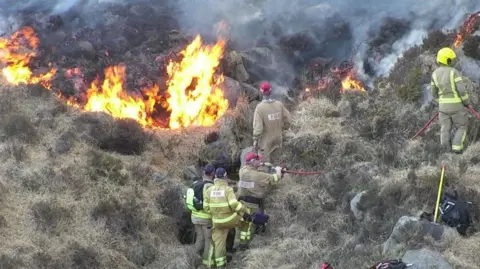 NIFRS
NIFRSButterflies, birds, insects and lizards are among the many species negatively affected by a spate of recent wildfires on the Mourne Mountains.
On Friday, the fire service confirmed its staff attended 1,112 incidents from Thursday 3 April to Thursday 10 April, 296 of which were wildfires.
The Northern Ireland Fire and Rescue Service said many were started deliberately.
The National Trust manages a special area of conservation in the Mournes, "with the whole site designated specifically because of the habitat that's there", its lead ranger, James Fisher, told BBC News NI.
He fears some species may not return after the wildfires.
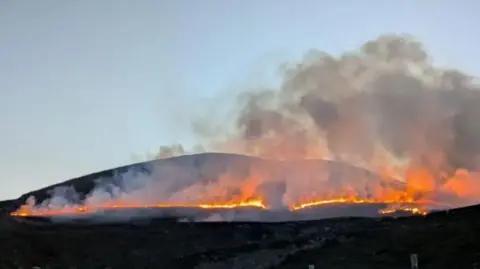 Rob Smyth
Rob SmythGrayling and Small Heath butterflies "are really rare elsewhere so their population's going to be really impacted," Mr Fisher added.
After a fire in the area in April 2021, the National Trust conducted a survey for invertebrates and found "a 90% reduction in invertebrate life" from burnt land compared to areas that remained unburnt.
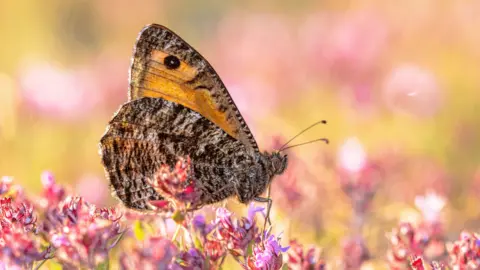 Getty Images
Getty Images"They formed the basis for many of these habitats, in terms of food for the birds or for smaller mammals, or even the lizards that we find up there," he added.
In the Mournes, Mr Fisher said rove beetles and other insects "support the skylarks and the meadow pipits that come from the lowlands to nest up in the uplands during this time of year".
"Those birds, in turn, then provide a food source for some of the more charismatic birds, like peregrine falcons or kestrels."
Upland heathland
The mountain range has more than 50% of Northern Ireland's upland heath habitat, according to Mr Fisher.
Upland heathland is characterised by the presence of low-growing shrubs, such as heather.
"It's a real prime area for the only native lizard that we get in Northern Ireland - the viviparous lizard," he added.
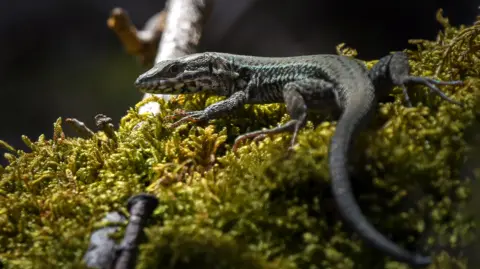 Getty Images
Getty ImagesThe April 2021 wildfires caused purple moor grass "to really take off" and prevented other plants, like heather, growing back.
"It really changed the whole community from what we would designate an upland heathland community to an upland grassland or acid grassland community," he said.
Cattle were placed in those areas to eat the grass, to try to re-establish the heath.
Red grouse
Red grouse feed on young heather shoots and nest in the more mature heather stands.
But with the fires destroying much of the vegetation in the area, Mr Fisher fears the red grouse will move out of the area, if the heather does not return.
"With the time that it takes for the heather to reach maturity and to form the denser, more mature stands, the grouse just won't be able to survive there, so they won't come back," he said.
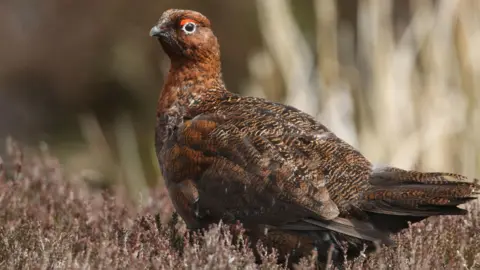 Getty Images
Getty ImagesDr Neil Reid is a conservation biologist at Queen's University.
He researched the impact of wildfires on the Mournes in 2011.
He said those fires "covered about 10 square kilometres in a not dissimilar area to where they're burning at the moment".
His research found that lots of wetland species, such as carnivorous sundews and bog asphodel, disappeared after the fires.
Some birds had still not returned a year after the fire either.
'Death by a thousand cuts'
With wildfires seemingly happening in the Mournes every few years, Dr Reid says "it's kind of a death by a thousand cuts".
"You lose a bit each time and the mountain becomes more and more impoverished, more and more grassland like and less and less wet peatland like," he added.
"From the growth rate that we observed in the heather, we could extrapolate that would probably take about seven years for the heather to regain its full height again, but that doesn't mean that the ecosystem is restored.
"That just means the heather has come back - a lot of those other species might never come back."
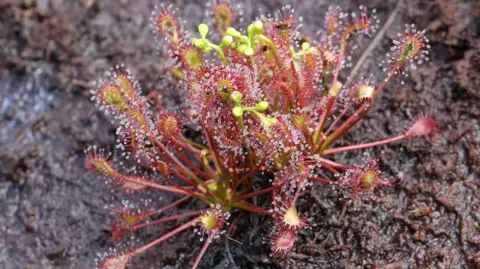 Getty Images
Getty ImagesConservationist Andy Carden conducts bird breeding surveys in the Mournes twice a year.
In spring, insect-eating wheatears arrive from Africa to nest and breed in the Mournes.
"Without the insects and with burnt, blackened bare ground, they will not have the homes that they've flown here for," he said.
"The ground nesting birds, like the skylarks and the meadow pipits, the wrens and stonechats, they'll have lost their nests and eggs."
The area beside Bloody Bridge Valley, where firefighters tackled a two mile long fire, is a "very important" breeding ground for skylarks.
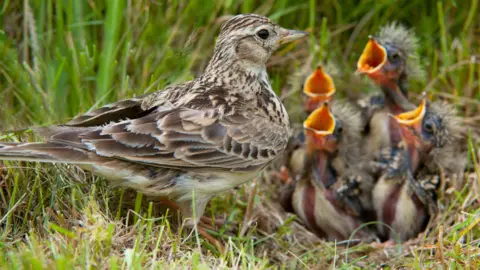 Getty Images
Getty ImagesHe said it will be "a sad sight" when he does the next bird survey.
"The habitat is just going to be destroyed," he said.
"It's hard to know if there'll be any breeding going on in there at all this year.
"It takes a long, long time for it to come back.
"Places that have burnt a decade ago or more than that, you can tell and you can see that the vegetation is different. It hasn't come back."
